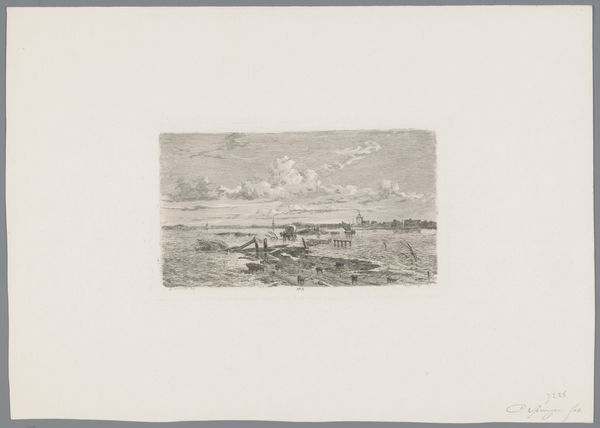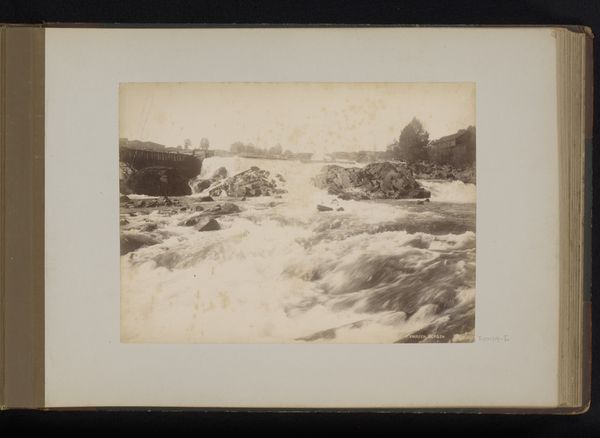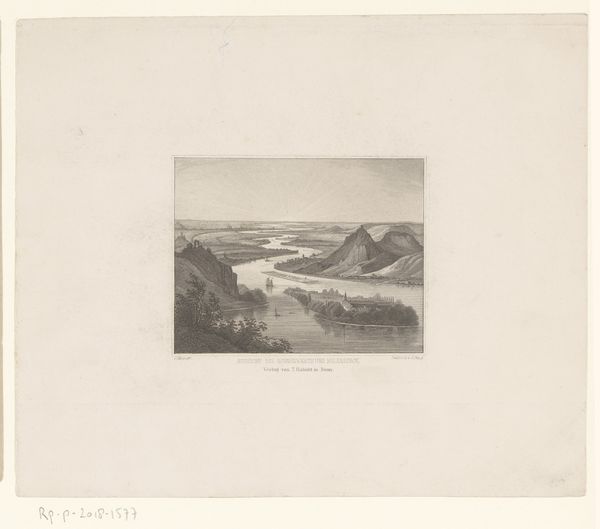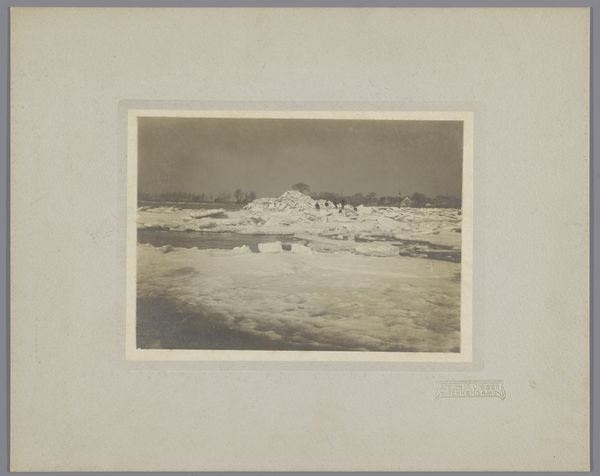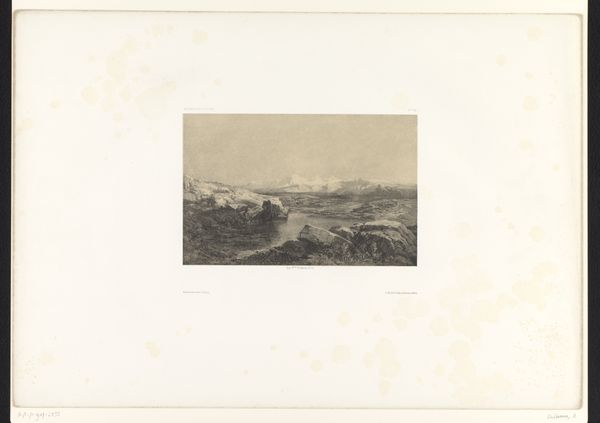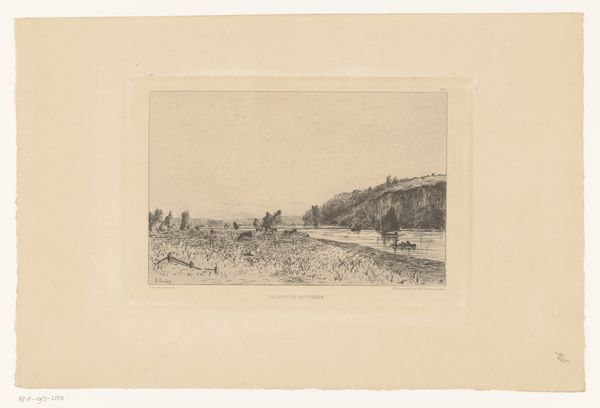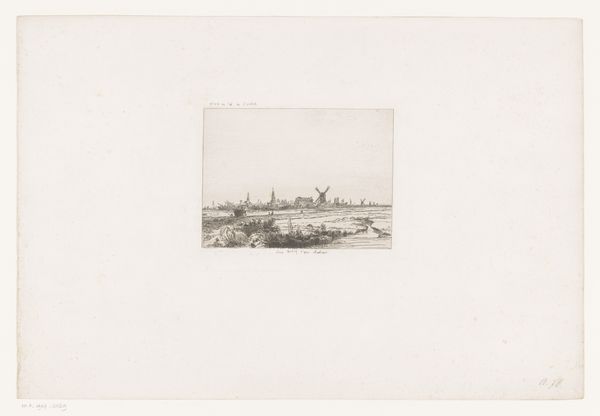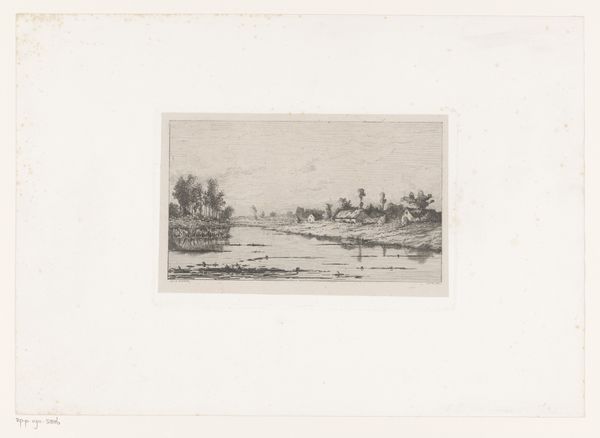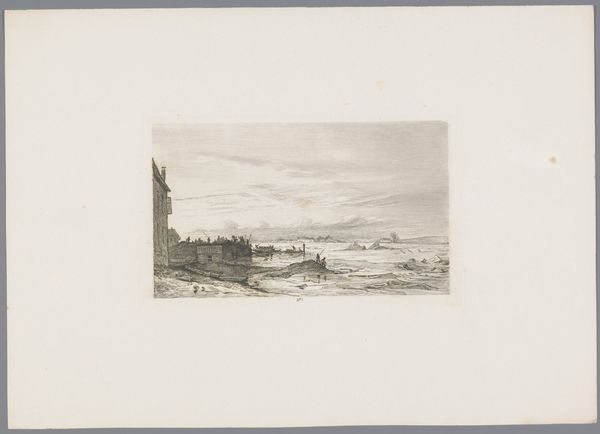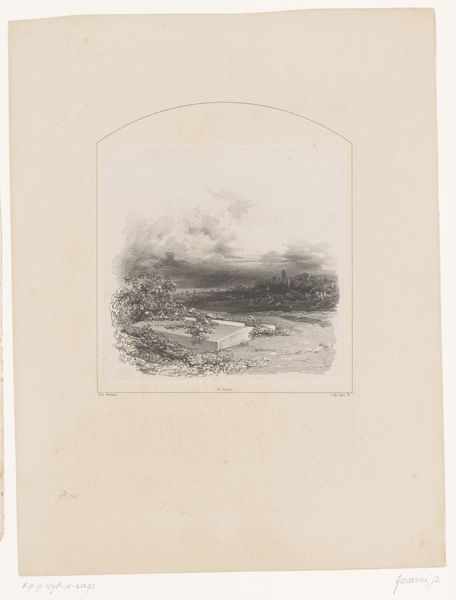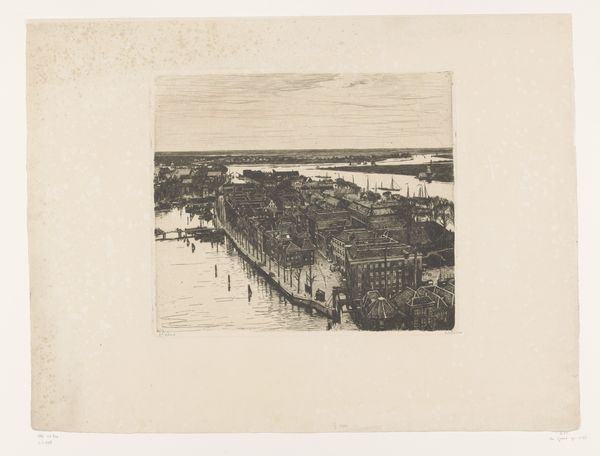
print, engraving
# print
#
landscape
#
cityscape
#
engraving
#
realism
Dimensions: height 300 mm, width 422 mm
Copyright: Rijks Museum: Open Domain
Curator: Welcome. We’re standing before Petrus Kiers' engraving from 1855, titled "Kruiend ijs op de Rijn bij Arnhem", depicting the ice-covered Rhine at Arnhem. Editor: There's such starkness. A quiet dread permeates the image. The jagged ice floes seem like fractured monuments. What first catches my eye is the texture, particularly that harsh juxtaposition between the frozen water and distant softness. Curator: Yes, that interplay is crucial. The medium of engraving allows for such precision in rendering the gradations of light and shadow, delineating each shard of ice with a sharp clarity that intensifies the feeling of cold. It captures, essentially, the physical sensation within the formal structure. Editor: The visual vocabulary speaks volumes. Ice has been a long-used emblem, it is fascinating how ice appears as an indifferent force—a symbolic mirror reflecting humanity's vulnerability, perhaps, or ephemerality? Note how that church spire, a presumed symbol of hope and permanence, is diminished by the expanse of ice. Curator: A fascinating interpretation. Looking at it structurally, observe how Kiers uses the line of trees at the riverbank as a visual anchor, grounding the cityscape in the foreground. It creates a planar effect, almost dividing the image into distinct zones. Editor: A compelling tension between stillness and impermanence emerges, almost suggesting an anticipation of a thaw. And for contemporary viewers familiar with the rhythms of environmental cycles, the melting hints at cyclical regeneration but perhaps an impending transformation of the city landscape, which, for me, is fraught. Curator: The realism inherent in the artistic technique is really crucial. It’s tempting to reduce realism as mere replication, but in Kiers’ hands, it becomes a profound tool. The commitment to depicting detail with exactitude generates an emotional impact. Editor: A vital visual record, indeed. By the sharp angularities in the work we have witnessed Kiers, not only freezing that specific moment on the Rijn, but using these iconic objects to amplify broader conversations that echo even now. Curator: Absolutely, by closely examining form and the materiality we also glean such powerful interpretations of this scene and appreciate the artist's craft.
Comments
No comments
Be the first to comment and join the conversation on the ultimate creative platform.

